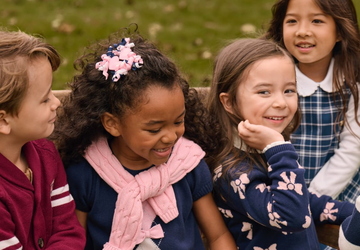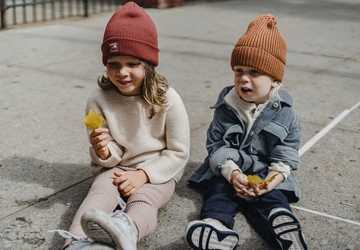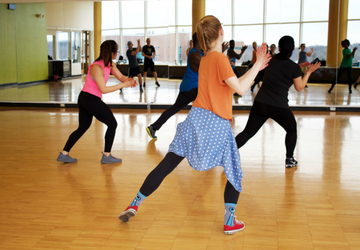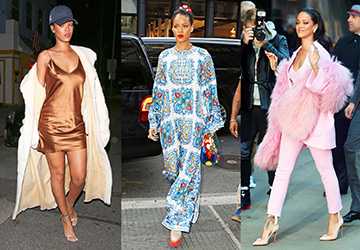5 Easy Ways to Combine Kids' Clothing
Author: sana
Dressing your kids can be a hassle, especially for parents. With all the fashion trends and requests for clothing swaps, keeping things stylish, classy, or expensive is a challenge.
Kids grow fast, so their clothes become too small, which can be annoying and expensive because they have to change clothes. A diverse wardrobe is always a challenge when you're on a budget.
In this blog post, we explore five tips that parents can implement to make the most of their kids' wardrobes. These tips will help you design unique, stylish outfits that are quick and inexpensive to make.
Learn how to make the most of your kids' clothes.
What Are the Benefits of a Mix-And-Match Wardrobe?

That's where having versatile clothing for your kids comes in handy. Buying clothes that can be interchangeable with other clothes helps avoid wasting time and money unnecessarily.
The mix-and-match concept allows you to create multiple outfit combinations with fewer pieces of clothing. This means you'll spend less time in front of the mirror or dressing room mirror looking for a unique look that matches an upcoming family event.
Also, a diverse wardrobe ensures that kids are always well-dressed without spending too much on clothes. Having a wardrobe full of easily changeable clothes is a godsend for busy parents.
Focusing on versatility in purchases is a financially smart solution for growing families, as it allows you to wear each piece as many times as possible.
5 Easy Ways to Create a Versatile Look for Your Child
Now that you know why your child needs a flexible wardrobe, it's time to learn five rules to effectively combine your child's clothes.
1. Choose a Color Palette
Choosing clothing colors is the first step in mixing and matching wardrobes. Using multiple colors that are close to each other on the color wheel guarantees that most clothes can be worn together, giving you plenty of clothing options.
Consider these versatile color palettes for children:
● Navy, white, and red: One of the best combinations that will never get boring.
● Gray, pink, and teal are subtle and muted tones that give the interior a calm and cheerful look.
● Khaki, white, and green are natural colors closer to natural elements, with gray-brown tones predominating the palette.
Choose harmonious colours matching your child's skin tone and personality when choosing clothes.
2. Invest in the Basics
In particular, any versatile or functional wardrobe must first have a few basic or must-have pieces. These pieces can be paired with many outfits and worn formally or informally.
Must-have basic elements of your child's wardrobe include:
● Simple, especially colorless t-shirts, such as white, black, gray.
● Comfortable "faded" jeans
● Comfortable, stretchy leggings in solid colors or simple patterns.
To achieve these basics, wear some statement pieces, such as a colorful cardigan, a printed skirt, or a cute graphic t-shirt. The possibilities are endless!
3. Add Fun Accessories
Earrings, belts, scarves, and accessories are the trump cards in many outfit combinations. They can turn the simplest clothes into something very special and give the outfit a bit of the owner's spirit and flair.
Child-friendly accessories to consider include:
● Hats: Hats and beanies are accessories that can add a childlike touch to your outfit, as can sun hats.
● Scarves: Lightweight scarves with fun prints can be a colorful and exciting addition.
● Belts: A colorful belt can lift a dress or liven up a plain pants and shirt set.
When buying accessories, make sure they match many of the outfits in your child's wardrobe. That's how you get the most bang for your buck!
4. Layering for Versatility

Mixing is a real game-changer, especially if you want to save on clothes and create different outfits. Layering allows you to switch from one season to the next or from day to evening.
Must-have layering pieces in your child's wardrobe include:
● Cardigans should be neutral or easily blended with other colors or for best effect can be combined with fun prints.
● Denim jackets: A timeless classic that remains stylish regardless of season.
● Vests are ideal for providing the warmth many people need without wearing heavy layers.
To layer correctly, start with bottoms like a t-shirt or dress, then layer other pieces of different lengths and fabrics. So don't be afraid to try something new; combining different designs can be stunning!
5. Mix Patterns and Textures
Layering patterns and textures is a great way to make an outfit stand out and express your child's personality. But don't worry, with a few tips, you can mix like a pro.
When combining patterns, keep these tips in mind:
● Combine small and large prints, such as polka dots, with large florals.
● It's recommended to pair a few strongly patterned pieces with solid-colored garments.
● Stay true to a certain color trend to maintain continuity.
The possibilities are endless: two chunky knit sweaters with sleek leggings or a ruffled skirt with a solid T-shirt!
Create New Looks to Keep Your Child Happy!
With these five simple habits, you can create a versatile wardrobe that will keep your child stylish and help you save time and money. Start pairing today and feel the difference when you have a properly planned wardrobe.
Make things easier for yourself and more affordable for your child. With these tips, you'll be the "king/queen" of the playground among other parents.
Frequently Asked Questions
Q: How do I choose a color palette for my child's wardrobe?
A: Choose clothes with colors that coordinate with your child's skin tone.
Q: What are the essential essentials for your child's wardrobe?
A: Essential clothing is simple tees, fitted jeans, and practical leggings. These garments can create many different looks.
Q: How can you style different looks for different seasons?
A: The most important thing is to choose lighter clothing for warmer seasons and warmer clothing for colder seasons. Choose clothing that can be easily adjusted based on the current situation or specific day needs.
Q: Can you mix bold patterns without them biting each other?
A: Yes! Use multiple patterns in the same proportions and use simple, neutral furniture to create contrast. Stick to a consistent color scheme to complete the look.







